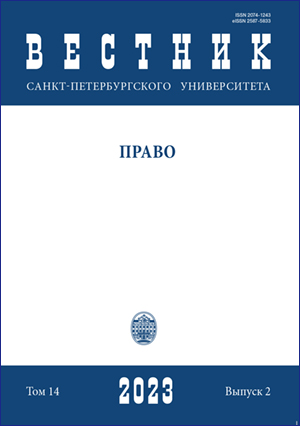Hematopoietic stem cells from umbilical cord blood (placenta) as an object of civil rights
DOI:
https://doi.org/10.21638/spbu14.2023.207Abstract
The article examines the problems of civil law regime of hematopoietic stem cells of umbilical cord (placental) blood. Currently, hematopoietic stem cells of umbilical cord (placental) blood, as well as other human biological objects are not legally classified as objects of civil rights. As part of the study, the author conducted an analysis of hematopoietic stem cells of umbilical cord (placenta) blood in the context of their attribution to civil rights objects, for which they were studied in the refraction of such properties (attributes) of civil rights objects as discreteness, legal binding and consistency. Based on the analysis, it was found that the examined cells correspond to the properties (attributes) of objects of civil rights and therefore can be classified as such. One of the key problems arising in law enforcement is the determination of the owner of these cells. To answer this question, the author has analysed the legal position of the child’s father, the child’s mother and the child himself, taking into account medical advances. It is concluded that both mother and child have rights to these cages and they are subject to the regime of joint ownership. It is argued that the ownership of hematopoietic stem cells arises at the time of isolation of their concentrate from the umbilical cord (placental) blood. Considering the contractual regulation of legal relations in the use of hematopoietic stem cells of umbilical cord (placenta) blood, taking into account that their collection, transportation and storage are types of works (services) constituting medical activities, it is concluded that these activities should be carried out in accordance with Chapter 39 “Gratuitous provision of services” of the Civil Code. In terms of storage of isolated cells, the rules of Chapter 47 “Storage” of the Civil Code of the Russian Federation may be applied subsidiarily
Keywords:
hematopoietic stem cells, cord blood, placental blood, medical activity, transplantation, object of civil rights, ownership
Downloads
References
Downloads
Published
How to Cite
Issue
Section
License
Articles of "Vestnik of Saint Petersburg University. Law" are open access distributed under the terms of the License Agreement with Saint Petersburg State University, which permits to the authors unrestricted distribution and self-archiving free of charge.







